Illustrations of the set
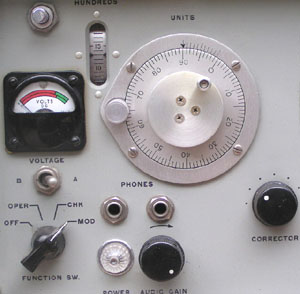
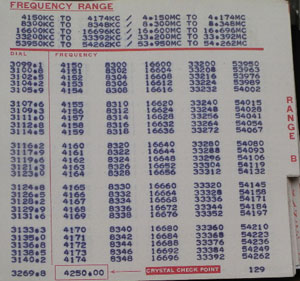
Views of the range switch and top.
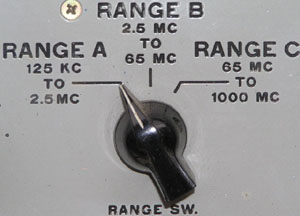

The spares and identification plate.

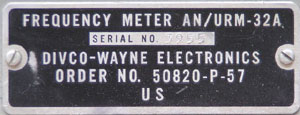
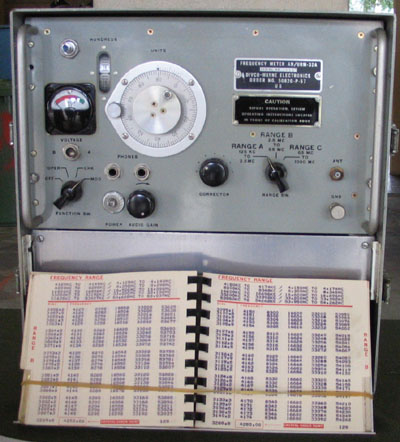
The meter has the following frequency ranges:
| Band A | 0.125 - 2.5MHz |
| Band B | 2.5 - 65MHz |
| Band C | 65 - 1000MHz |
The URM-32 was obviously a replacement for the BC-221 and its VHF and UHF counterparts, enabling one unit to cover all versions of the earlier equipment.
Sensitivity: With an RF input signal of .1 volt an AF output of .05 mw is obtained.
Accuracy: .01% (-40F to 125F)
Radio Frequency 100uv minimum across an external 50 ohm resistive load.
Power Input:
6 volts dc 1A
180vdc 25mA
Number of Valves 5
Weight 27lb (12.3 kg)
The unit had 2 power sources available - either batteries (2 x BA-419/U and one BA412/U) or power unit PP-1243/U (115/230vac) The power sources were fitted in the lower section of the case, behind the calibration book.






© Ian O'Toole, 2009. Page created: 29/01/05 Last updated: 11/12/2009